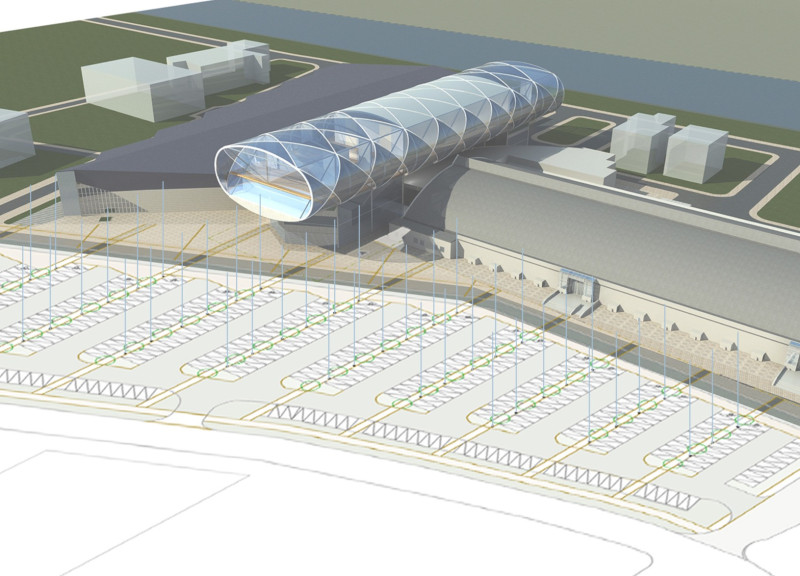5 key facts about this project
Functionally, the project is organized to optimize the user experience. It features various specialized areas that cater to different activities, ensuring that the space supports both research endeavors and public exhibitions. The layout not only promotes adaptability but also encourages interaction between visitors and researchers. This multifaceted approach is evident in the carefully delineated zones, which facilitate both individual exploration and communal learning.
One of the notable aspects of the architectural design is its materiality. The project predominantly utilizes glass, steel, concrete, and wood, each contributing to a harmonious aesthetic and functional narrative. The expansive glass panels in the upper section of the building offer transparency and openness, creating a visual connection with the surrounding environment. This choice reflects an architectural ethos that values light and space while enhancing the interior atmosphere. The use of steel ensures structural integrity, allowing for the fluid forms that define the building’s silhouette. Concrete forms the robust foundation, providing durability and thermal performance, while wooden elements bring warmth and texture to the interior finishes, enriching the sensory experience of the space.
Several unique design approaches are evident throughout the project. The incorporation of flexible spaces allows for ongoing adaptability, accommodating a range of exhibition sizes and research activities. Moveable walls and reconfigurable areas support dynamic programming, showing a keen understanding of evolving usage patterns. This adaptability is crucial in a research and exhibition context, where the demand for versatility is paramount.
Another significant feature of the project is its emphasis on sustainability. The design integrates passive environmental strategies, such as strategic solar orientation and natural ventilation, which minimize reliance on mechanical systems. This focus on energy efficiency is complemented by features such as green roofs or living walls that not only enhance biodiversity but also contribute to the building’s aesthetic appeal. The architectural choices reflect a commitment to reducing the ecological footprint, positioning the project as a responsible addition to the urban landscape.
Additionally, the relationship between the building and its surrounding environment is carefully considered. The architectural form acts as a transitional element between the historic fabric of Riga and its contemporary advancements. This contextual awareness fosters a sense of place, allowing the structure to resonate with both the local community and visitors. In this way, the project operates as a catalyst for dialogue, bridging cultural narratives and promoting communal identity.
The lighting design within the building deserves special mention. Thoughtfully integrated to enhance architectural features, the lighting creates an inviting atmosphere that evolves throughout the day. By highlighting specific areas and providing a sense of orientation, this aspect of the design supports both functional needs and aesthetic enjoyment.
As a whole, this architectural project embodies a modern vision that prioritizes functionality, sustainability, and community engagement. The thoughtful incorporation of materiality, spatial organization, and contextual sensitivity reflects a comprehensive understanding of contemporary architectural practices. The result is a facility that not only meets the functional demands of a research center and exhibition space but also contributes to the surrounding urban fabric.
For those interested in the finer details of this project, architectural plans, architectural sections, and architectural designs are available to explore. These resources provide deeper insights into the architectural ideas that shaped this project, allowing for a more comprehensive understanding of its design principles. Engaging with these elements will offer a richer appreciation of the architectural narrative and the careful considerations that define this innovative facility.


























